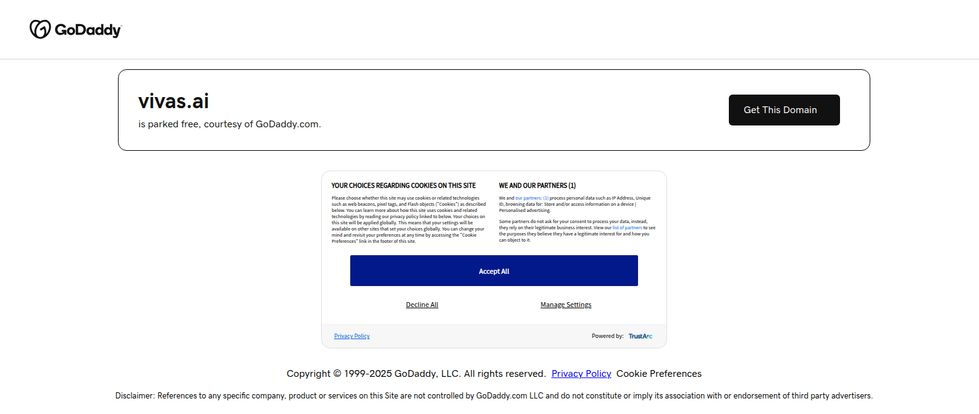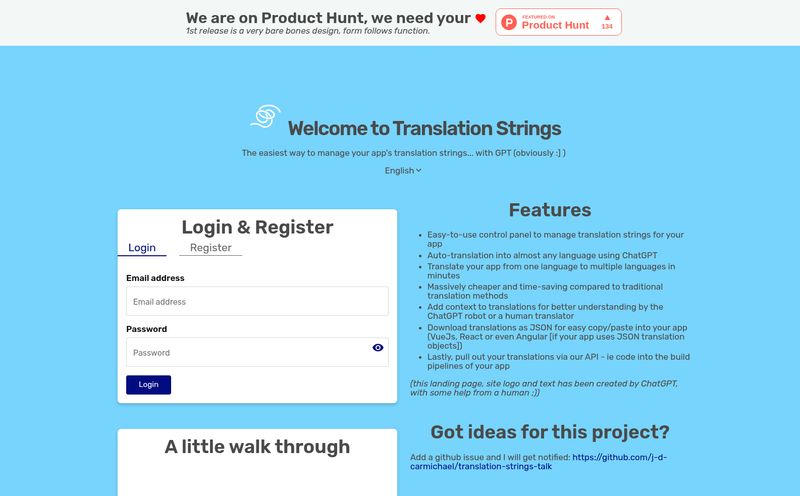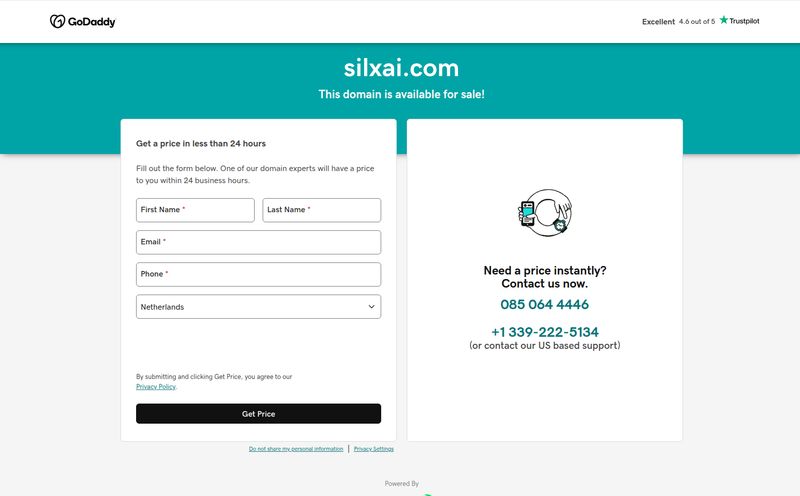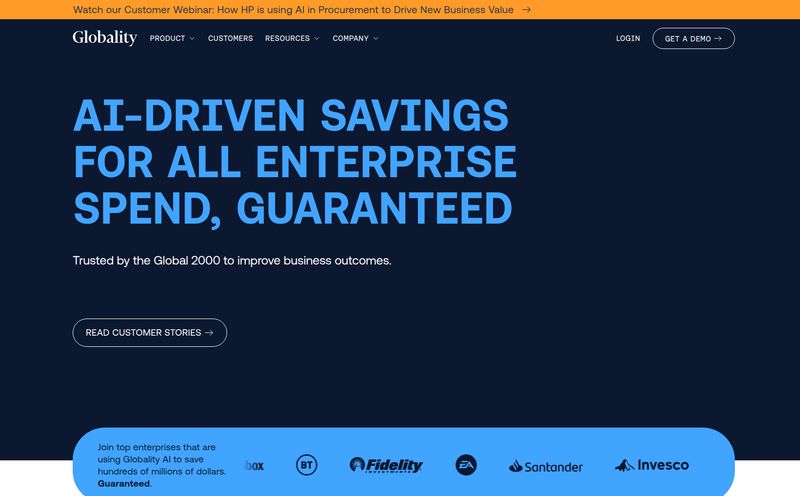You know, in this line of work, you get used to the constant churn of new tools. Every other week, there’s a new AI-powered gizmo that promises to change the way we do marketing, generate traffic, or write copy. It’s a lot to keep up with. But every now and then, you stumble across something that genuinely piques your interest. Something that seems to solve a real, nagging problem. For me, a little while back, that something was Vivas.AI.
I found it through a colleague, a mention in a Slack channel about democratizing AI. The concept was brilliant, really. A low-code platform designed for what the industry calls “citizen developers”—the smart folks in marketing, operations, or finance who aren’t hardcore coders but who know exactly what they need a process to do. Vivas.AI was supposed to be their toolbox, a one-stop marketplace to just drag and drop powerful AI models into their workflow. Simple. Elegant. And apparently… a ghost.
What Was the Big Idea Behind Vivas.AI?
Before we get to the spooky part, let's talk about the dream. The pitch for Vivas.AI was compelling because it addressed a huge bottleneck in the tech world. Getting access to sophisticated AI and machine learning models usually means you need a team of expensive data scientists and engineers who speak Python as a first language. Vivas.AI wanted to tear down that wall.
The idea was to create a central hub where you could access over 60 pre-trained AI models for all sorts of tasks. Think document processing, data extraction, workflow automation—the whole shebang. Instead of building a solution from scratch, a marketing manager could theoretically grab an AI model for sentiment analysis and plug it right into their customer feedback system. No coding degree required. It’s a powerful vision, one that platforms like Zapier and Make have championed in the automation space. Vivas.AI wanted to be that for applied artificial intelligence.
The All-Star Feature Set That Could Have Been
When I dug into the feature list, I got even more invested. It wasn’t just a half-baked idea; they had clearly thought through the major pain points that businesses face when trying to adopt AI. It’s a shame, really, because some of these features are still on my personal wish list for a perfect platform.
An AI Model Playground
The core of the offering was its massive library of plug-and-play AI models. We're talking about models for everything from reading invoices and contracts (a classic OCR and data extraction problem) to more conversational AI tasks. This is the kind of thing that could save a small business thousands of hours a year in manual data entry. Instead of having someone eyeball PDFs all day, you could just feed them into a Vivas.AI workflow. At least, that was the plan.
Your Data, Your Rules, Your AI
Now this, this is what really got my attention. Vivas.AI was promoting flexible deployment, including self-hosting options and a “Bring Your Own LLM” (ByoLLM) model. For anyone concerned about data privacy, this is the holy grail. Most SaaS platforms require you to send your data to their cloud, which is a non-starter for companies in healthcare, finance, or legal fields. The ability to run the platform on your own iron and use your own API keys for models like OpenAI's GPT or Google's Gemini is a massive advantage. It gives you complete control over your data and costs. I’ve always felt that the future of enterprise AI has to include this level of autonomy.
Built for the Rest of Us
The commitment to being “citizen developer ready” was the golden thread tying it all together. The whole point of low-code/no-code is to empower the person who understands the business problem, not just the person who understands the code. By offering simple connectors and a visual interface, Vivas.AI was aiming to put the power directly in the hands of the problem-solvers. It’s a trend I’m seeing more and more, and it’s one of the most exciting developments in tech right now.

Visit Vivas.AI
The Price of Power (Or What It Would Have Cost)
So, what was the price tag on this dream? The pricing structure seemed pretty reasonable, especially for the capabilities on offer. They had a few tiers that made sense for different scales of business.
Here’s a quick breakdown of the proposed plans:
| Plan | Price | Key Features |
|---|---|---|
| Free / Lite | Free (14-day trial) | 10 pages/day, 60+ models, Vivas.AI managed deployment. |
| Standard | USD $499/month | 3,000 pages/month, unlimited enterprise model creation, Vivas.AI managed. |
| Enterprise | USD $999/month | 10,000 pages/month, self-hosting option, use your own OCR keys. |
The free trial was generous enough to get a real feel for the platform. The Standard plan seemed perfect for a mid-sized marketing team or department looking to automate document workflows. And the Enterprise plan, with its self-hosting option, was clearly aimed at larger organizations with strict data governance policies. The pricing for some other products, like "Leaf Converse" and "Leaf Essentials," required contacting the company—a classic enterprise sales tactic that I'm never too fond of, but it’s standard practice.
So, Where Did It All Go Wrong?
This brings us to the elephant in the room. After getting all excited about this platform, I went to check it out. I typed `vivas.ai` into my browser, ready to sign up for the free trial and take it for a spin. And I was greeted by… a GoDaddy parked domain page. A digital tumbleweed. The lights are off and nobody’s home.
What happens to a startup that just vanishes? It’s a tale as old as the dot-com boom. Maybe they ran out of funding—the AI space is incredibly expensive to compete in. Perhaps the founders were acqui-hired by a bigger tech company that just wanted the talent and not the product. Or maybe they pivoted to a different concept entirely behind the scenes. We'll probably never know for sure, and that's the frustrating part. Vivas.AI now exists only as a ghost in the machine, a collection of cached web pages and a promising idea that never quite reached its audience.
Lessons from a Digital Ghost
The story of Vivas.AI, incomplete as it is, is a pretty good reminder of the brutal reality of the tech industry. A great idea and a solid feature set aren't always enough. Execution, marketing, funding, and a little bit of luck all have to align perfectly. While the platform itself may be gone, the problems it tried to solve are more relevant than ever. Businesses still need easier ways to use AI, and citizen developers are a growing force that can't be ignored.
Frequently Asked Questions
What was Vivas.AI?
Vivas.AI was envisioned as a low-code/no-code platform that would allow businesses and "citizen developers" to easily access and implement a wide range of pre-trained AI and machine learning models for tasks like document processing and workflow automation.
Why is the vivas.ai website a parked domain?
It's impossible to say for certain without a statement from the founders. Typically, this happens when a company ceases operations, fails to renew its domain, or is in the process of being sold. It indicates the platform is no longer active.
What does the term 'citizen developer' mean?
A citizen developer is a user who creates new business applications for consumption by others, using development and runtime environments sanctioned by corporate IT. In simpler terms, it’s an employee who builds applications without having a formal background in coding, often using low-code platforms.
Could you bring your own AI models to Vivas.AI?
Yes, one of its standout features was the "Bring Your Own LLM" (ByoLLM) and "Bring Your Own OCR" capabilities, especially in its Enterprise tier. This would have allowed users to plug in their own AI model subscriptions for greater control over data and costs.
Are there any good alternatives to what Vivas.AI offered?
Absolutely. The space is competitive. For low-code automation and integration, platforms like Zapier and Make (formerly Integromat) are fantastic. For more specific AI-powered document processing, you might look at tools like Amazon Textract or Sensible.so, though they may require a bit more technical know-how.
A Final Thought
Pour one out for Vivas.AI. It might be a digital ghost story, but it’s one that points toward a very exciting future. The need for accessible, powerful, and secure AI tools is only going to grow. And while Vivas.AI may not be the one to deliver it, its vision serves as a great blueprint for the next innovator who comes along. I, for one, will be waiting to see who picks up the torch.
Reference and Sources
- Vivas.AI Pricing Page (Archived): https://vivas.ai/pricing
- Amazon Textract: https://aws.amazon.com/textract/
- Make (Integromat): https://www.make.com/



